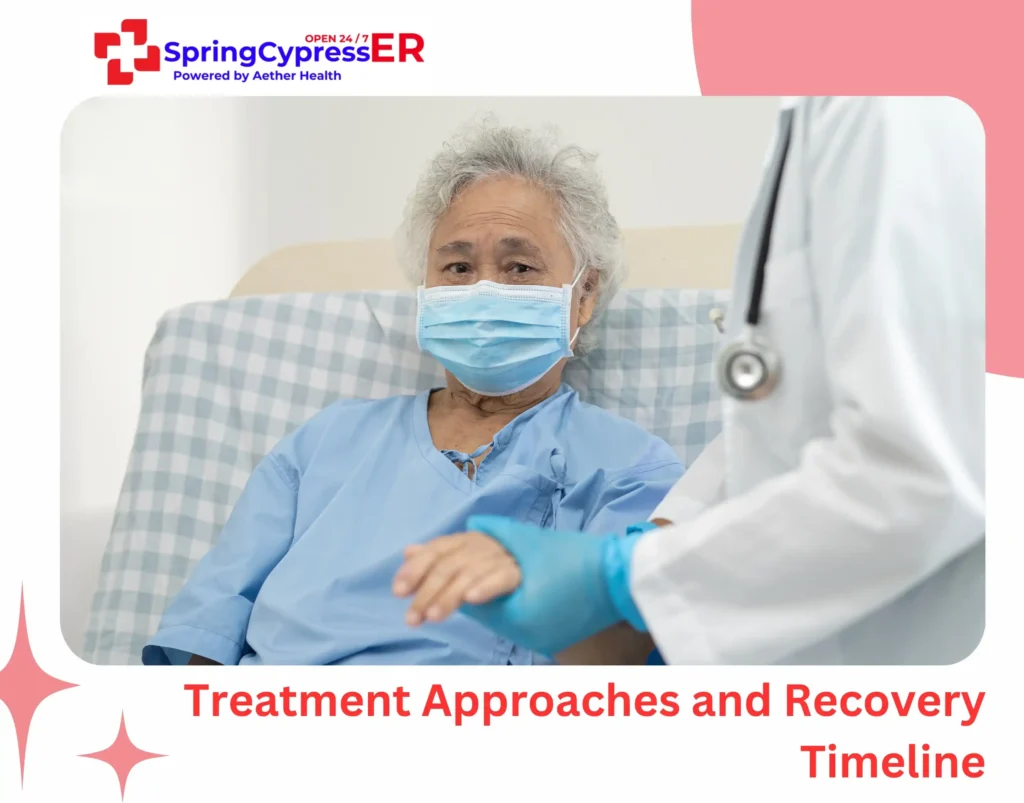When you’re recovering from surgery, the last thing you want to worry about is developing another health problem. Yet pneumonia after surgery is a reality that catches many patients and families off guard.
Post-surgery pneumonia can extend hospital stays by weeks and significantly complicate what should be a straightforward recovery. It often goes unrecognized in its early stages because symptoms can mimic normal post-surgical discomfort.
The good news is that postoperative pneumonia can be caught early and prevented with the right knowledge. Let’s explore what to watch for and how to protect yourself during recovery.
What Is Pneumonia After Surgery?

Pneumonia after surgery, or postoperative pneumonia, is a lung infection that happens when bacteria, viruses, or other germs enter the lungs and cause inflammation. Unlike regular pneumonia, this chest infection after surgery typically involves resistant hospital germs that require stronger treatment.
Surgery creates the perfect conditions for postoperative pneumonia to develop. Anesthesia makes it harder to cough up mucus, surgical pain prevents you from taking deep breaths, and staying in bed allows fluid to collect in your lungs. When you can’t clear out mucus properly, harmful germs multiply and cause infection.
Recent research shows that pneumonia after surgery affects 12.39% of patients undergoing high-risk procedures like craniotomy¹. Across all types of surgical specialties, it accounts for 2.7–3.4% of complications, making it a leading post-surgical infection².
How to Recognize Pneumonia After Surgery: 7 Warning Signs
Recognizing the early symptoms of postoperative pneumonia can be lifesaving. Here are the seven key warning signs every patient and family member should monitor:
1. Persistent Fever and Chills
A fever that develops 48-72 hours after surgery, particularly one that spikes above 101°F (38.3°C), is often the first indicator of pneumonia after surgery. This fever may be accompanied by uncontrollable chills and sweating, signaling that the body is fighting an infection.
2. Difficulty Breathing and Shortness of Breath
Post-surgical patients who experience increasing difficulty breathing, especially when lying flat or during minimal exertion, may be developing a chest infection after surgery. This symptom often worsens progressively and shouldn’t be dismissed as normal post-operative discomfort.
3. Productive Cough with Discolored Sputum
While some coughing is expected after surgery due to anesthesia effects, a persistent cough that produces thick, yellow, green, or blood-tinged sputum indicates potential postoperative pneumonia. The sputum may also have an unusual odor.
4. Chest Pain and Discomfort
Sharp, stabbing chest pain that worsens with breathing or coughing can signal pneumonia after surgery. This pain is typically different from incisional pain and may radiate to the shoulder or back.
5. Rapid Heart Rate and Breathing
Tachycardia (rapid heart rate above 100 beats per minute) and tachypnea (rapid breathing above 20 breaths per minute) while at rest can indicate the body’s response to infection and reduced oxygen levels.
6. Mental Confusion and Altered Consciousness
Particularly concerning in elderly patients, mental confusion, disorientation, or changes in consciousness level can be early signs of severe post-surgical infection affecting oxygen delivery to the brain.
7. Extreme Fatigue and Weakness
While fatigue is common after surgery, extreme exhaustion that prevents basic activities or worsens rather than improves over time may indicate the development of pneumonia after surgery.
Why Does Postoperative Pneumonia Occur?
Several factors contribute to the development of postoperative pneumonia. The surgical process itself compromises the body’s natural defense mechanisms in multiple ways.
Anesthesia Effects
General anesthesia suppresses the cough reflex and reduces lung function, making it difficult to clear secretions from the airways. This creates an environment where bacteria can multiply and cause infection.
Reduced Mobility
Post-surgical patients often have limited mobility, leading to shallow breathing and inadequate lung expansion. This condition, known as atelectasis, creates areas of collapsed lung tissue where bacteria can accumulate.
Compromised Immune System
Surgical stress, pain medications, and the body’s inflammatory response to surgery all contribute to temporary immunosuppression, making patients more susceptible to infections.
Aspiration Risk
Patients who have undergone abdominal or thoracic surgery may have an increased risk of aspirating stomach contents or oral secretions, which can lead to pneumonia after surgery.
High-Risk Patient Categories
Recent studies have identified specific patient populations at high risk for post-operative pneumonia.
Age-Related Risks
Patients over 65 years of age face significantly higher risks due to age-related changes in lung function, immune response, and overall physiological reserve. The elderly also commonly have multiple comorbidities that compound their risk.
Surgical Procedure Types
Some surgeries carry higher pneumonia risks than others. Complex procedures involving major reconstruction show pneumonia rates of 11.6%, while standard major surgeries have rates around 4.5%.³ Chest surgeries, abdominal operations, and emergency procedures generally pose higher risks than simple outpatient surgeries.
Pre-existing Medical Conditions
Patients with chronic obstructive pulmonary disease (COPD), diabetes, heart disease, or compromised immune systems face elevated risks of developing pneumonia after surgery. Smoking history also significantly increases susceptibility to post-operative pneumonia.
Nutritional Status
Poor nutritional status, particularly low serum albumin levels, has been identified as a significant risk factor for post-surgical infection. Malnourished patients have impaired immune function and slower healing processes.
Strategies to Prevent Pneumonia After Surgery

Preventing post-operative pneumonia requires teamwork between healthcare providers, patients, and families. Proven prevention programs have shown remarkable success in reducing infection rates.
Pre-operative Preparation
Getting patients ready before surgery significantly reduces pneumonia risk. This includes quitting smoking at least four weeks before surgery, managing chronic conditions like diabetes, and maintaining good nutrition. Patients with breathing problems should receive lung rehabilitation when possible.
Breathing Exercises
Deep breathing exercises and breathing devices are essential prevention techniques. These tools encourage full lung expansion, prevent lung collapse, and help clear airways. Patients should begin using breathing devices within hours of surgery and continue throughout recovery.
Early Mobilization
Getting patients moving as soon as safely possible after surgery dramatically reduces pneumonia risk. Early walking improves breathing, promotes normal lung function, and enhances overall blood flow.
Oral Hygiene Programs
Research shows that good oral care reduces pneumonia rates significantly. Regular oral hygiene, including mouth rinses and dental care, lower harmful bacteria that can lead to chest infection after surgery.
Head Elevation
Keeping the head of the bed elevated at 30-45 degrees reduces choking risk and improves lung expansion. This simple positioning change can significantly decrease the chances of developing pneumonia after surgery.
Treatment Approaches and Recovery Timeline

When postoperative pneumonia does occur, prompt treatment is essential for optimal outcomes. Treatment approaches have evolved based on recent research findings and antibiotic resistance patterns.
Diagnostic Procedures
Diagnosis typically involves chest X-rays, complete blood counts, blood cultures, and sputum analysis. CT scans may be necessary for complex analysis or when initial x-rays don’t show clear results.
Antibiotic Selection
Since postoperative pneumonia often involves resistant bacteria, doctors start with powerful, broad-spectrum antibiotics. Treatment selection depends on local antibiogram data and gets adjusted based on test results from your specific infection.
Supportive Care Measures
Beyond antibiotics, treatment includes breathing support, intensive lung care, proper hydration, and pain management that allows for deep breathing and movement. Oxygen therapy may be necessary for patients with serious respiratory issues.
Recovery Timeline
Recovery from pneumonia after surgery varies significantly based on patient health, the type of bacteria involved, and treatment response. Most patients show improvement within 48-72 hours of proper treatment, with complete recovery typically occurring over 7-14 days.
When to Seek Emergency Medical Attention
Certain symptoms require immediate medical care. Contact your healthcare provider immediately or go to the emergency room if you experience:
- High fever (over 101.5°F) with chills or shaking
- Severe trouble breathing or sharp chest pain
- Confusion or difficulty thinking clearly
- Coughing up blood or blood-tinged mucus
- Extreme weakness that prevents normal daily activities
- Signs of serious infection (rapid heartbeat, low blood pressure, dizziness when standing, extreme fatigue)
Don’t wait if you have multiple symptoms at once. This could indicate your pneumonia after surgery is becoming life-threatening and needs immediate treatment.
Key Takeaway
Pneumonia after surgery can develop rapidly, especially when dehydration, weakened immunity, or bacterial infections are present. At the ER of Spring Cypress, we provide immediate chest X-rays, IV antibiotics, and continuous monitoring for postoperative pneumonia and chest infections after surgery.
Our 24/7 emergency care ensures you receive immediate and expert treatment that these serious infections demand.
FAQs
1. Which surgery is the highest risk for pneumonia?
Surgeries involving the chest or upper abdomen like lung, heart, or esophageal procedures, carry the highest risk due to their impact on breathing and lung expansion.
2. Can you get pneumonia again after recovering?
Yes, it’s possible to get pneumonia more than once, especially if you have underlying health conditions or a weakened immune system.
3. Does anesthesia increase the risk of pneumonia?
Yes, general anesthesia can increase pneumonia risk by suppressing the cough reflex and reducing lung function, making it easier for secretions to accumulate.
4. What puts you at higher risk for pneumonia?
Risk factors for pneumonia include advanced age, smoking, chronic lung diseases (like COPD or asthma), recent surgery, immobility, and a weakened immune system.
5. How to treat a post-surgical infection?
Treatment typically includes antibiotics, wound care, drainage if necessary, and close monitoring. Severe cases may require hospitalization for IV therapy.
6. Is chest infection normal after surgery?
No. Chest infection after surgery isn’t normal but it can occur, especially after major surgery or prolonged immobility. Prompt medical attention is essential to prevent complications.




